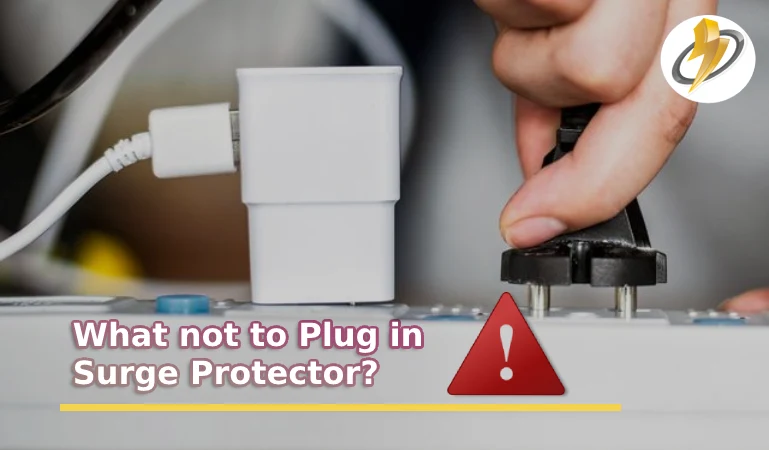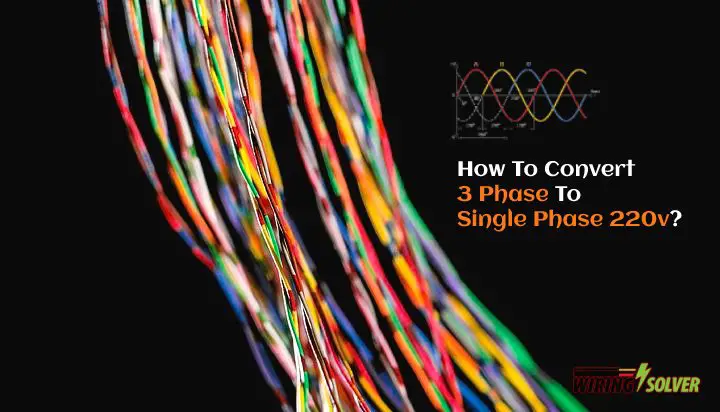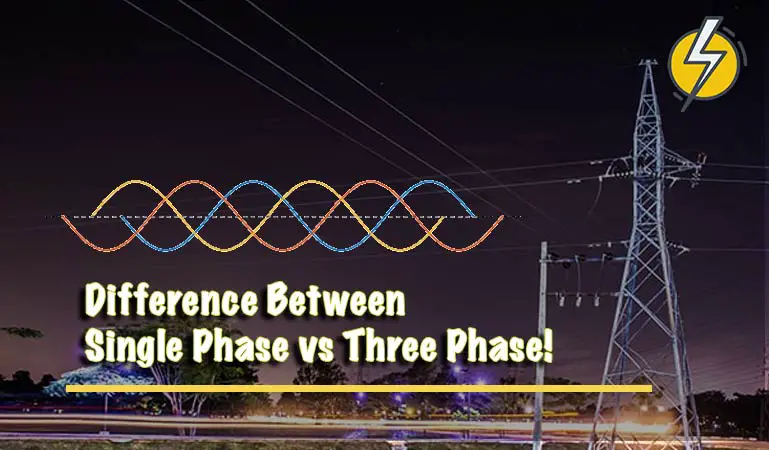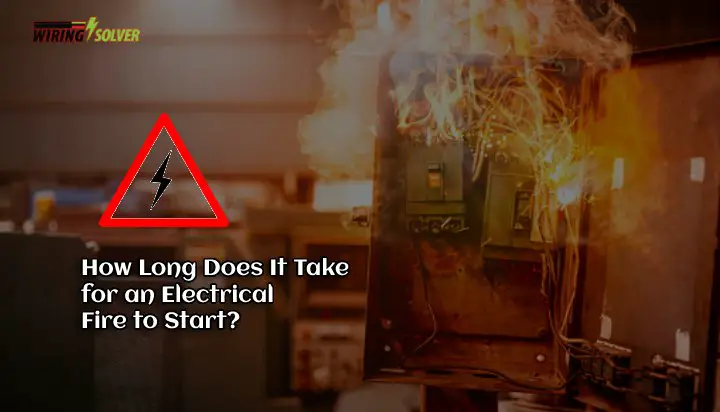In today’s world, almost everything we use is electronic. From our alarm clocks to our computers, we rely on electronics to get through the day. With so many devices that need to be plugged in, it’s important to know what not to plug into a surge protector.
In this blog post, we will be discussing what you should not plug into a surge protector.

List of Things You Shouldn’t Plug Into Surge Protector:
Here are some devices that we often plan to plug into a surge protector but are not compatible with it! Have a look and stop today!
1. Air Conditioner
If a professional has helped you to install your AC, they will surely recommend you to run the AC via the dedicated outlet. You might think that there are multiple outlets on your surge protector. And so, you can simply plug in the AC.
As it can bear the power of all the outlets, it can also work for the AC. But this is where you are going wrong! Your Air Conditioner requires more power than your multi-outlet power surge can afford. And if you plug it into the power strip, there will be circuit breaker tripping no doubt.
Along with this, severe overheating can damage the AC along with the circuit. Fire hazard isn’t unimaginable in this case. Dedicated outlets for the air conditioners are always recommended by the experts. For more protection, you can look into a UPS for your AC. If you don’t have a generator, a surge protector can backup for you during the power cuts.
2. Bulky Kitchen Appliances
One of the very first things that you won’t like to power with the surge protector is the kitchen appliances that are too large. Well, large kitchen appliances refer to the ones that require more power to be operated.
The list includes your refrigerator along with the dishwasher. Imagine the little wall mount surge protector of your house. It is petite already! How can it carry such a heavy load? The high-powered appliances require more power than a power strip is unable to carry.
It’s best if you plug in your large kitchen appliances directly to the wall. Some people rely on the multi-outlet converter so that they can plug in more devices. That’s a no-no once again! If you don’t want to risk your circuit shutting off or tripping, you better settle for the direct wall connection for powering them.
It’s necessary to remember that these devices require a dedicated outlet for themselves. However, for the smaller items, a power strip is enough!
3. Daisy Chaining
Once surge protector in another- that’s a mess; trust us! If you are a little brainy, you won’t do it. Some people have a short-length surge protector. And to carry the cord to their laptop, they simply add another power strip there. The method seems like the 5-minutes craft but it is a graveyard!
When you plug in one power surge into another, it will eventually pressurize or overload the circuit breaker. And finally, both of the power surges will be gone for good! Along with this, circuit breaker tripping will be an everyday call for you.
And what you do not understand is this process is more dangerous than simple circuit tripping. Yes, it can start an electrical fire in your house too! For creating a home theater, it’s alright to use a power strip too! But even in creating a home theater, don’t use one surge protector with another surge protector/ power strip or extension cord!
The method of adding one power strip to another is called daisy chaining and doesn’t only threaten one circuit but the whole house. Extension cords are the same thing as power strips here. They can also start a fire if you add one with another.
4. Hair Styling Devices
We often do not care about hair styling tools. For our advantage, we just add a surge protector to the wall and connect a flat iron with it. It’s simply because we want to style our hair in front of the mirror! But well, this can cause severe damage too!
No matter what hair styling devices you are using, do not settle for the power surges. It can be regular flat irons or curling irons, connect it directly to the wall. Add a wall outlet in your preferred area to reduce the chance of electric havoc.
We often add a surge protector so that we can use the hairdryer in our restroom. Do not do it. In the case of the bathroom usage of hairstyling rooms, a regular wall outlet will not be enough. As you are going to deal with the wet area in the bathroom, it should be a GFCI outlet.
5. Portable Heaters
In the case of connecting the TV, a wall mount surge protector can do an amazing job. But for keeping the room warm, you can’t have faith in it! Portable heaters and these sorts of devices have a cycle and these will get switched on and off during the usage period. And if you switch them on, they will require a good amount of electricity to get powered.
If you think that your large power strip is enough to power it- hold my beer! No, nothing is enough other than the wall outlet. It will surely overload the power strip. And eventually, you will see circuit tripping when you connect it to the surge protector.
6. Small Kitchen Appliances
We have already talked about the bulky kitchen appliances. So, it’s alright to plug the small kitchen appliances into your surge protector, right? No, once again, you have to be cautious about the appliance. What we think is that if the equipment is large, it will require more power.
And yes, this is right. But not all small appliances will require less power. For example, a blender is a very small appliance but it requires a good amount of power. The same thing goes for microwaves and toasters.
The rice cookers and slow cookers should also be connected to a direct wall outlet. Just imagine a coffee maker. No, you simply should not use a power strip or surge protector for plugging it in.
7. Sump Pump
Who is saving you from a flooded basement? Of course, the sump pump is safeguarding you! And a device that is used for protecting the entire basement of your house, how can you think of running it with a surge protector?
No matter how much electricity the surge protector carries or how many outlets are added there- just DO NOT plug in the sump pump in your power strip. Another reason that you have to keep in mind is that surge protectors are usually designed for use in your house for powering the laptop, mobile, and other small devices.
Add a UPS surge protector for uninterrupted service in the dry areas if you want to! But these are not perfect for damp areas. For the damp areas, you cannot rely on the regular wall outlets too. For the best safety, go for the GFCI outlets. Certify that the outlet is installed higher from the ground. So, in case your basement gets flooded, the outlet will be safe anyway!
8. Vacuum Cleaner
We have discussed the large kitchen appliances here. But vacuum cleaner is a device for the whole house. And we have listed it separately because there are tons of questions regarding if you can use the vacuum cleaner with a surge protector or not. You don’t want to damage your vacuum cleaner, right? And this is why you should avoid using a surge protector or extension cord with a vacuum cleaner.
Yes, we understand that you have to move the vacuum cleaners around the house a lot. And at times, you might not get a wall outlet close to you. This is when you rely on the power strips. Vacuum cleaners consume a lot of power. And it’s not a dream to see the surge protector fry when you connect it!
If other devices are added to the surge protector, chances are, you are going to damage them for good too. If you search, you will find several stories of power strips or surge protectors causing a fire hazard in the house for overloading. If you cannot find a way with the wall outlet, go for a battery-powered vacuum cleaner. It’s going to save the house and devices.
Wrap Up
We have only mentioned a few devices that should not be plugged into a surge protector or a power strip. No matter how many outlets your surge protector includes or how powerful or large it is, the best thing is to use it only when needed. It is designed for small tasks; let’s only use it for the jobs they are designed for!


![What Is A Conductor Of Electricity? [Explained]](https://wiringsolver.com/wp-content/uploads/2021/12/What-Is-A-Conductor-Of-Electricity.jpeg)

![Surge Protector Lights and Their Functions [ Complete Guide]](https://wiringsolver.com/wp-content/uploads/2022/11/Surge-Protector-Lights-and-Their-Functions.jpg)
![Chassis Wiring Vs Power Transmission Wiring [The Diferences]](https://wiringsolver.com/wp-content/uploads/2022/01/Chassis-Wiring-Vs-Power-Transmission-Wiring.webp)
